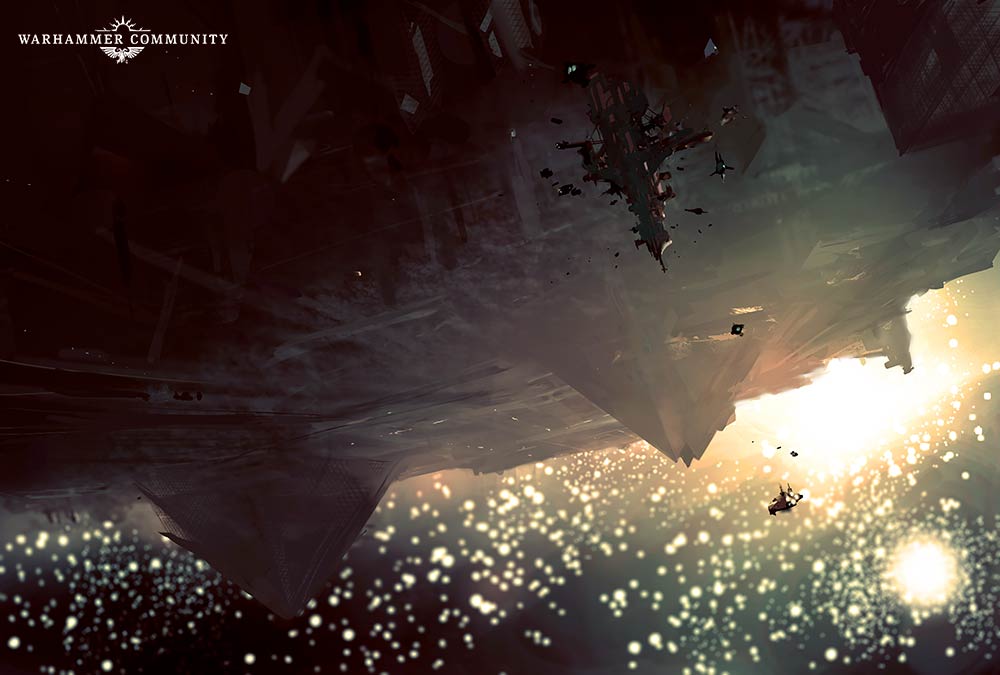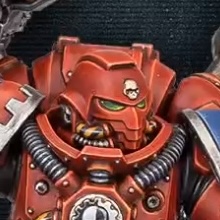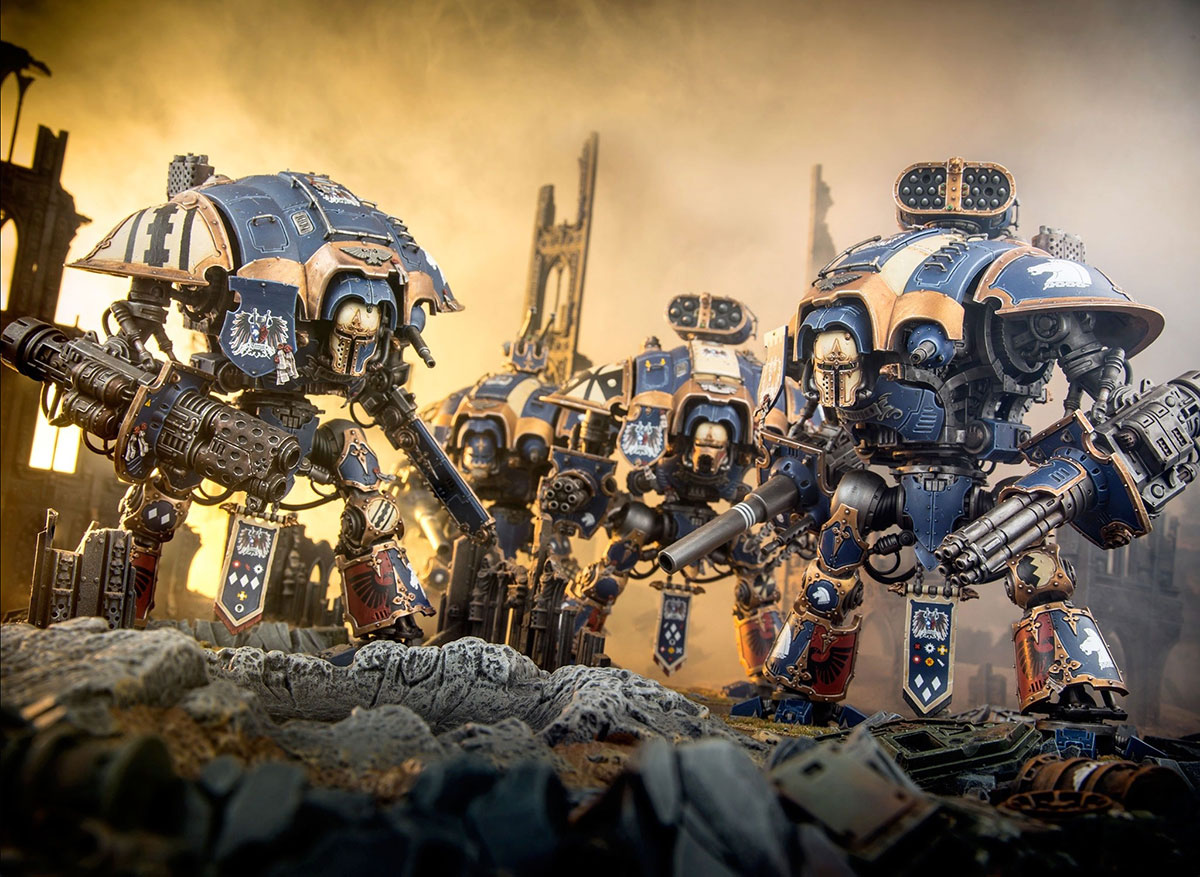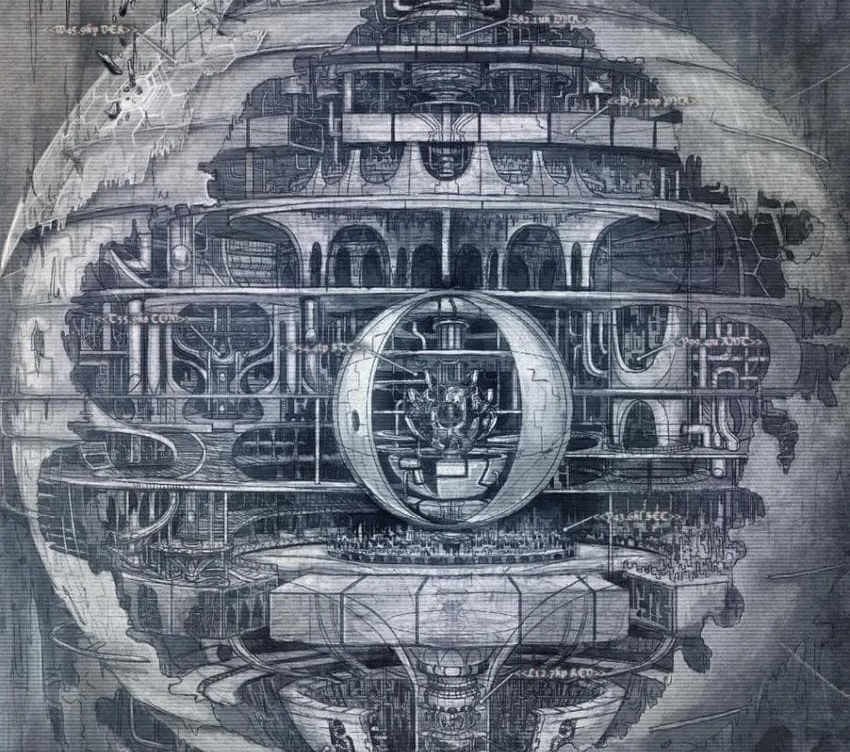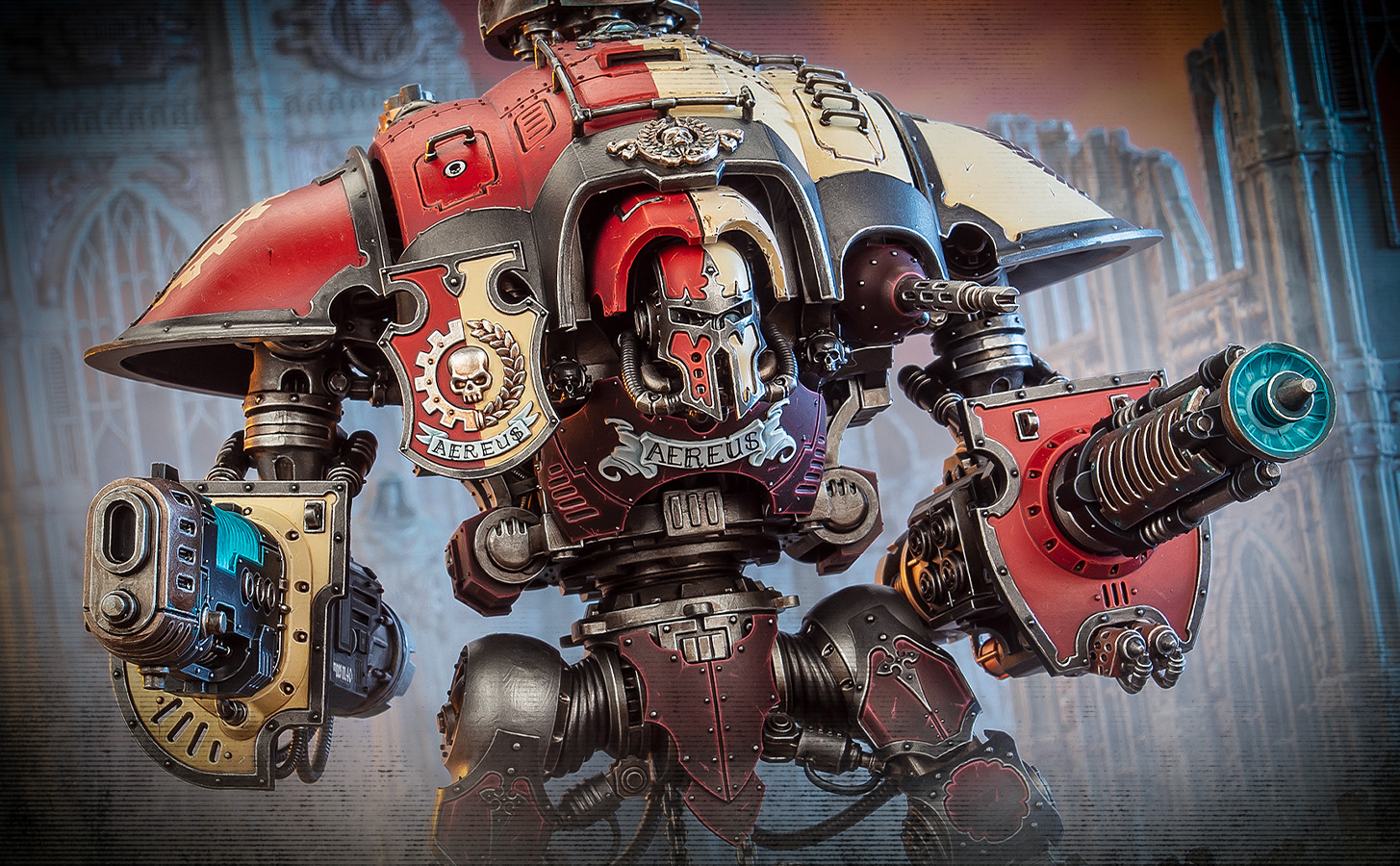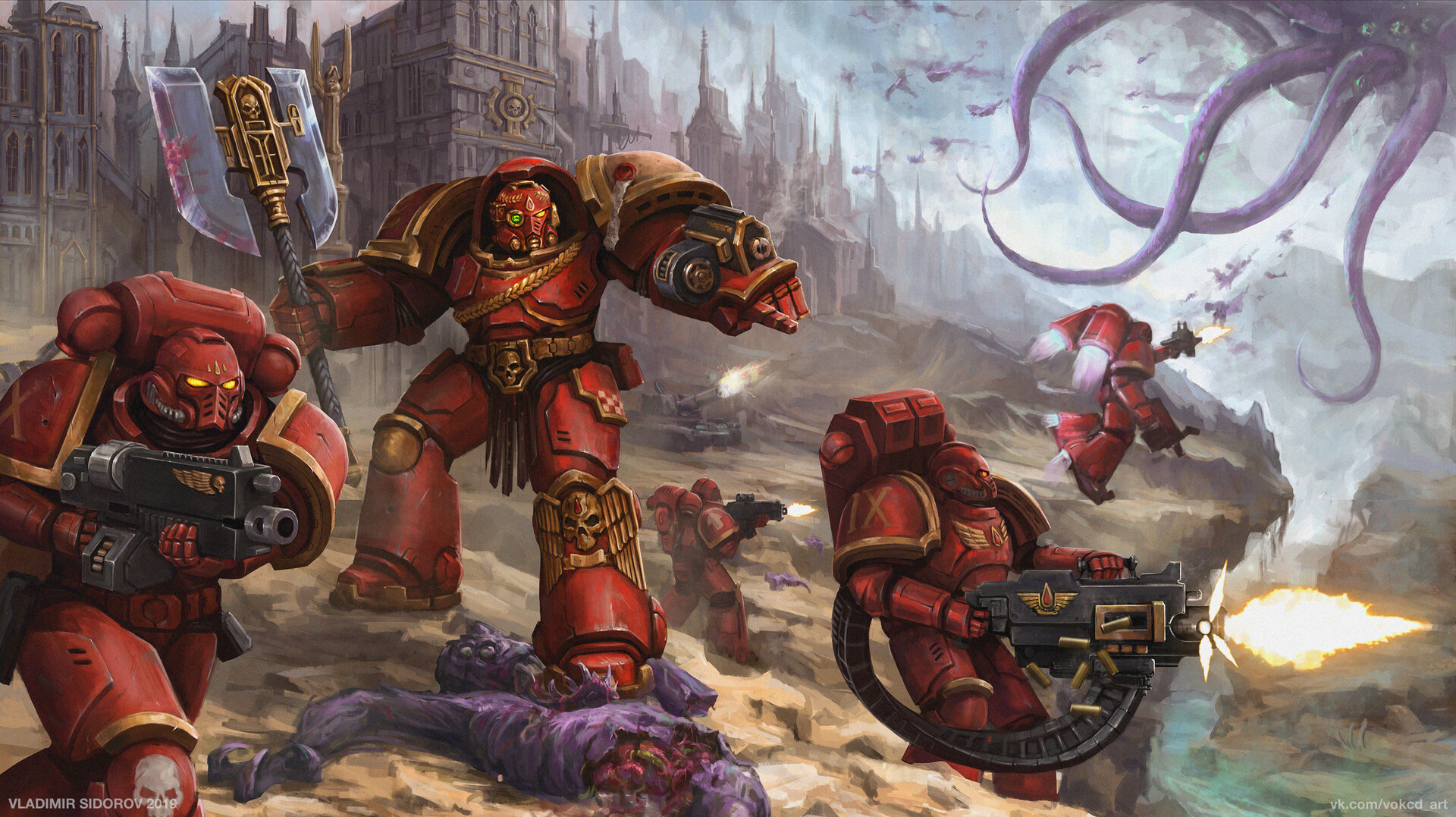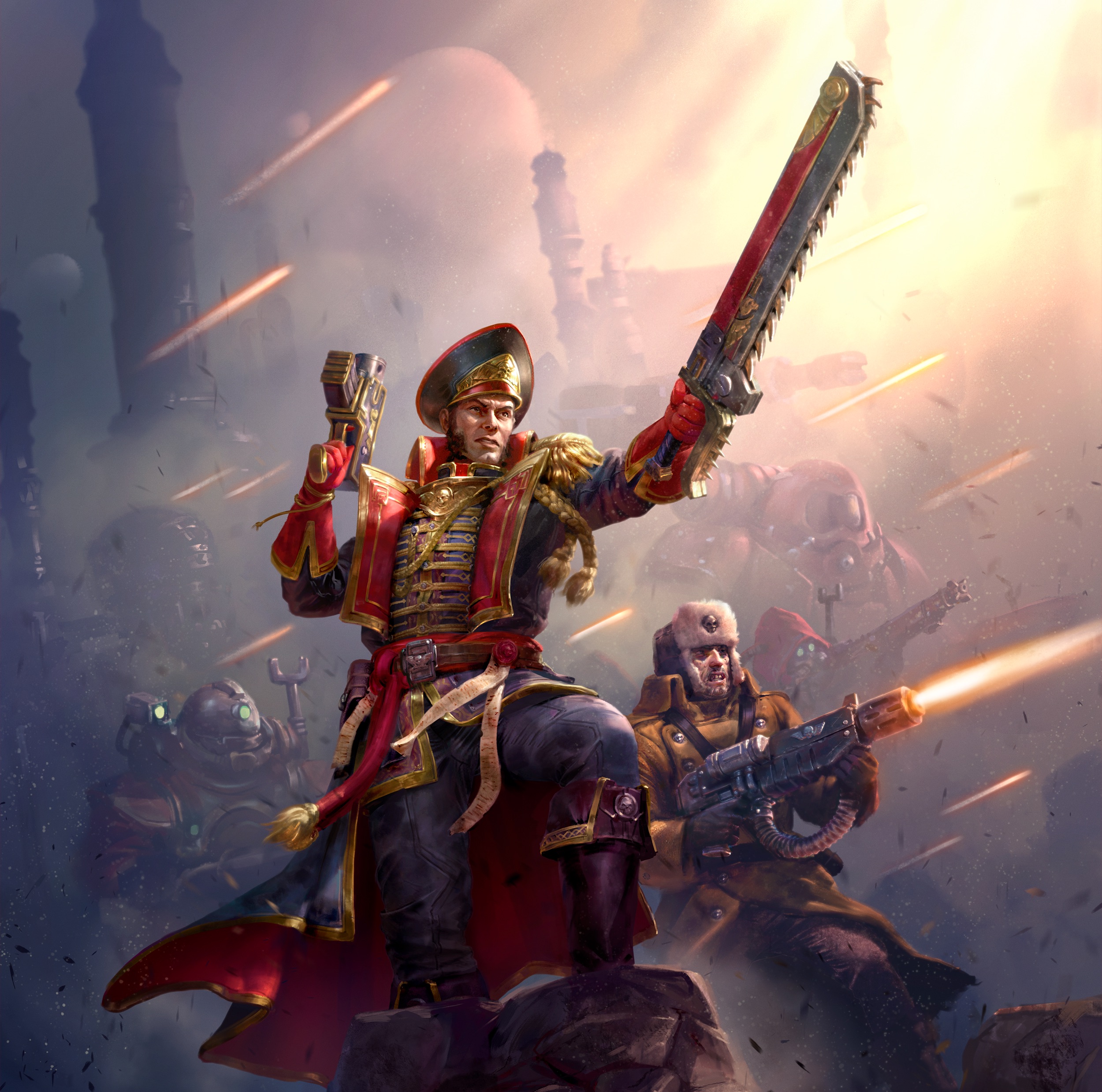In the grim darkness of the far future, there is only war—and questions without answers. The Warhammer 40,000 universe spans tens of thousands of years and countless worlds, creating a tapestry of lore so vast that even the most dedicated scholars of the Imperium would struggle to comprehend it all. This immense scale is part of what makes the setting so compelling; it creates a sense that we are merely glimpsing fragments of a much larger story, one that extends far beyond what any single narrative could contain.
The mysteries of Warhammer 40k aren’t merely plot holes or oversights—they’re deliberate narrative devices that enhance the setting’s appeal. As renowned Black Library author Dan Abnett explains, “There are deliberate mysteries… because it increases the sense that this is a huge and ultimately unknowable universe. And that makes it more interesting. There are always things that we don’t know the answer to. The universe becomes much richer because it allows space for your imagination.”
This philosophy of intentional ambiguity has served the Warhammer 40k universe well for decades. Some questions are gradually answered as the narrative progresses, while others remain perpetually just beyond our grasp, fueling endless speculation among fans. The line between mythology and history blurs across ten millennia of Imperial records, with contradictory accounts and lost knowledge creating a setting where absolute truth is as rare as peace.
But which mysteries stand above the rest? Which unanswered questions drive the most speculation, create the most intrigue, and hold the greatest potential to reshape our understanding of the 41st millennium? From the whispered secrets of the Golden Throne to the unfathomable horrors lurking beyond the galaxy’s edge, these are the greatest enigmas that continue to captivate fans of Warhammer 40,000.
The Emperor’s Enigmas: The Ultimate Mystery
At the heart of the Imperium—both literally and figuratively—sits the Emperor of Mankind upon the Golden Throne. No mystery in Warhammer 40,000 is more central or more profound than the true nature of this being who has guided humanity’s destiny for millennia. Though venerated as a god by trillions, the Emperor’s origins remain shrouded in contradictory accounts and mythological embellishments.
Was he truly born in ancient Anatolia around 8,000 BCE, as some texts suggest? Or was he the collective reincarnation of thousands of ancient shamans who sacrificed themselves to create a being capable of protecting humanity? The Emperor’s life before revealing himself during the Age of Strife is largely unknown, with only fragments of his ten-thousand-year existence documented in Imperial records. Even his true name has been lost to time—or perhaps deliberately erased.
Perhaps the most pressing question regarding the Emperor concerns his current state. For ten millennia, he has been interred within the Golden Throne—a mysterious device of unknown origin that sustains what remains of his physical form while he projects the psychic beacon of the Astronomican. But is he truly alive? Is he conscious? Can he communicate beyond the occasional psychic whisper that some claim to hear? The Sisters of Silence and the Adeptus Custodes guard these secrets zealously.
The Golden Throne itself represents another profound mystery. Its mechanisms are failing, and the Adeptus Mechanicus lacks the knowledge to repair it fully. What happens if the Throne fails completely? Would the Emperor finally die, or would he be reborn as some prophecies suggest? Would his death unleash a new god in the Warp, as some heretical texts claim, or would it simply extinguish humanity’s last hope? The implications are so terrifying that even contemplating them is considered heresy in many parts of the Imperium.
Most tantalizing of all is the question of the Emperor’s foresight and ultimate plan. Did he foresee the Horus Heresy? Was the betrayal of half his Primarchs somehow part of a greater design? Some radical scholars suggest that everything—from the Heresy to his internment on the Throne—was orchestrated by the Emperor himself as part of a scheme so vast and complex that it spans millennia. Others believe he was genuinely blindsided by Horus’s betrayal, his plans for humanity’s ascension derailed by the very sons he created to help achieve it.
The truth about the Emperor may be the one mystery that can never be solved without fundamentally altering the Warhammer 40,000 universe itself. As the central figure around which the entire setting revolves, the Emperor’s enigmas are not merely plot points to be resolved but the foundation upon which the grimdark future is built.
The Primarch Puzzles: The Emperor’s Missing Sons
Among the most enduring mysteries in Warhammer 40,000 lore are those surrounding the Emperor’s genetically engineered superhuman sons—the Primarchs. Created to lead his Space Marine Legions in the Great Crusade to reunite humanity, these demigod-like beings were scattered across the galaxy by the machinations of Chaos, setting in motion events that would eventually lead to the Horus Heresy.
Perhaps the most tantalizing Primarch mystery concerns the completely expunged II and XI Legions. Of the original twenty Primarchs created by the Emperor, all records of two have been deliberately erased from Imperial history. Unlike their brothers, whose fates—whether glorious or tragic—are chronicled in Imperial records, these two are referred to only as “the forgotten and the purged.” What transgression could have been so severe that even in a setting where half the Primarchs turned to Chaos, these two warranted complete removal from history?
Dan Abnett, one of Black Library’s most prolific authors, believes these Primarchs should remain mysterious: “They are deliberate mysteries… because it increases the sense that this is a huge and ultimately unknowable universe.” Games Workshop has indicated that these Primarchs will likely never be revealed, as they serve as blank slates for players to create their own Space Marine chapters and stories.
The Alpha Legion Primarchs, Alpharius and Omegon—identical twins who shared a single soul—present another profound enigma. Their true motivations during the Horus Heresy remain unclear. Some accounts suggest they joined Horus to ultimately defeat Chaos through a convoluted plan revealed to them by a xenos cabal. Others indicate their apparent treachery was merely a cover for gathering intelligence. With reports of Alpharius’s death contradicting each other, and Omegon’s fate entirely unknown, the question remains: were they traitors, loyalists working from within, or pursuing an agenda entirely their own?
Connected to the Dark Angels’ mysteries is the enigmatic figure known as Cypher, a Fallen Angel who carries a sword believed to be the Lion’s own. For millennia, Cypher has appeared at pivotal moments in Imperial history, his motives inscrutable. He appears to be on a journey to Terra, but for what purpose? Some theories suggest he seeks redemption by returning the sword to the Emperor himself, while others believe he intends to use it as a weapon of assassination. His most recent appearance brought him close to the Imperial Palace before he mysteriously escaped Imperial custody.
These Primarch mysteries speak to the heart of the Warhammer 40,000 narrative—a story of fathers and sons, of betrayal and loyalty, and of secrets that could either save humanity or condemn it.
Xenos and Cosmic Horrors: Threats Beyond Understanding
While the Imperium’s internal mysteries are profound, perhaps the most chilling enigmas in Warhammer 40,000 come from beyond humanity’s borders—alien threats and cosmic horrors that defy comprehension and hint at a universe far more terrifying than even the most paranoid Inquisitor could imagine.
The Tyranids represent perhaps the most existential question facing the galaxy: what could be so terrifying that it would cause an entire extragalactic species to flee into the Milky Way? The Hive Fleets that have attacked the galaxy are widely believed to be merely the vanguard of a much larger Tyranid presence. More disturbing still is the theory that the Tyranids aren’t simply migrating randomly but are being drawn to our galaxy specifically—possibly by the psychic beacon of the Astronomican itself. If true, this would mean the Emperor’s light, meant to guide humanity, is inadvertently leading to its doom.
What lies beyond the galaxy’s edge remains one of the setting’s most tantalizing mysteries. Particularly enigmatic is the region known as the Ghoul Stars, a section of space that even the most hardened void-farers avoid. What horrors lurk there that could frighten even those accustomed to the nightmares of the 41st millennium? The few expeditions into this region have either disappeared entirely or returned with crews driven to madness, babbling about “the Pale Wasting” and other incomprehensible threats.
The ancient weapons known as Blackstone Fortresses present another cosmic puzzle. Originally called the Talismans of Vaul by the Eldar, these massive star-shaped structures are of unknown origin, potentially predating even the War in Heaven. Their true purpose remains unclear, though they have demonstrated the power to destroy stars. One particular Blackstone Fortress, known as “Old Unfathomable” by daemons, appears to be sentient and has been pulling ships from across the galaxy into itself. What intelligence guides these ancient weapons, and what is their ultimate purpose in the galaxy’s fate?
Perhaps the most fundamental cosmic mystery is the true nature of the Warp itself. This dimension of psychic energy, which makes interstellar travel possible but also harbors the Chaos Gods, defies rational explanation. Is it merely a reflection of the material universe’s collective psyche, or does it have its own independent existence? Some radical theories suggest that the Warp and realspace were once a single dimension that was somehow split apart—and that the ultimate goal of Chaos may be to reunite them, with catastrophic consequences for all life.
These cosmic horrors remind us that in the vastness of the Warhammer 40,000 universe, humanity is but a small, fragile presence. The greatest threats may not be the enemies we know, but those we have yet to discover—lurking in the void between stars or in dimensions beyond our comprehension.
Historical Conundrums: The Shadows of the Past
The history of the Warhammer 40,000 universe stretches back millions of years, with each era holding its own profound mysteries that continue to influence the 41st millennium. These historical enigmas aren’t merely academic curiosities—they represent pivotal moments that shaped the galaxy as we know it, and potentially hold the keys to humanity’s survival.
The Dark Age of Technology represents humanity’s greatest achievement and its most catastrophic fall. During this era, mankind reached unprecedented technological heights, creating wonders like the Standard Template Constructs (STCs) and artificial intelligence. Yet this golden age ended in disaster with the rebellion of the Men of Iron—sentient machines that turned against their human creators. The exact nature of this conflict remains largely unknown. What sparked the rebellion? Was it a simple programming error, or something more sinister? Some tech-priests whisper heretical theories that the Men of Iron glimpsed something in the mathematical underpinnings of reality that drove them to turn on humanity—perhaps the same revelation that led to the birth of the Void Dragon, the C’tan entity rumored to be imprisoned on Mars itself.
Even more ancient is the War in Heaven, a conflict so old that it predates humanity’s evolution. Fought between the Necrontyr/C’tan alliance and the Old Ones approximately 60 million years ago, this war reshaped the galaxy and potentially created the conditions that would later give birth to the Chaos Gods. The full details of this conflict are lost to time, known only through fragmented Aeldari myths and unreliable Necron records. What weapons were deployed that could scar reality itself? What happened to the majority of the Old Ones? And perhaps most importantly, are there any surviving weapons or technologies from this era that could be used against the threats facing the galaxy today?
The Fall of the Aeldari represents another pivotal historical mystery. While the broad strokes are known—the Aeldari’s decadence and excess led to the birth of Slaanesh and the destruction of their empire—many crucial details remain obscure. Some evidence suggests that certain Aeldari foresaw the coming catastrophe and tried to prevent it. Others hint that the Fall might have been orchestrated or accelerated by external forces. The Drukhari of Commorragh claim to know the full truth, but their accounts are suspect at best. Understanding the exact mechanisms of the Fall could provide crucial insights into the nature of Chaos itself and potentially how to combat it.
Perhaps the most recent historical mystery with profound implications is the true nature of the Legion of the Damned. These spectral Space Marines appear without warning at moments of dire need, fight with supernatural ability, and vanish just as mysteriously. Imperial scholars debate whether they are the remnants of the lost Fire Hawks Chapter, manifested through warp phenomena, or something else entirely. Some radical theories suggest they represent the Emperor’s direct intervention in realspace, fragments of his consciousness given form through his immense psychic power. If true, this would have staggering implications for understanding the Emperor’s current capabilities and the potential evolution of his power.
These historical mysteries remind us that in the Warhammer 40,000 universe, the past is never truly dead—it continues to haunt the present, with ancient secrets waiting to be rediscovered, sometimes with catastrophic consequences.
Conclusion: The Value of the Unknown
In a universe as vast and complex as Warhammer 40,000, mysteries aren’t merely narrative loose ends—they’re essential components of what makes the setting so compelling. They create space for imagination, for debate, and for the kind of passionate theorizing that has sustained the community for decades.
As Dan Abnett wisely observed, “The universe becomes much richer because it allows space for your imagination.” This philosophy lies at the heart of what makes Warhammer 40k’s mysteries so effective. They aren’t simply questions awaiting answers but invitations to engage more deeply with the setting, to consider possibilities, and to find personal meaning in the gaps between established facts.
Games Workshop has masterfully balanced revelation with enigma throughout the evolution of the lore. Some mysteries, like the fate of Cadia or the return of Roboute Guilliman, have been resolved to move the narrative forward. Others, particularly those fundamental to the setting’s identity—like the true nature of the Emperor or the missing Primarchs—remain deliberately shrouded, protected from definitive answers that might diminish their mythic quality.
Perhaps the greatest mystery of all is the ultimate fate of the Warhammer 40,000 universe itself. In a setting defined by its tagline—”In the grim darkness of the far future, there is only war”—is there any possibility of resolution or redemption? Is the Imperium doomed to a slow, grinding collapse? Will Chaos eventually consume everything? Or is there some unforeseen third path, some glimmer of hope hidden beneath ten thousand years of superstition and decay?
This fundamental uncertainty is what gives Warhammer 40,000 its unique character. It is a setting poised perpetually on the edge of annihilation, where every victory is temporary and every defeat potentially catastrophic. The mysteries we’ve explored aren’t simply interesting puzzles—they’re the narrative fulcrums upon which the entire future of this fictional galaxy balances.
And so these mysteries remain, like the distant stars glimpsed from the viewport of a battle-scarred Imperial cruiser—points of light in the darkness, beckoning us forward into the unknown. In the endless war of the 41st millennium, perhaps it is these unanswered questions that truly keep us returning to the grim darkness of the far future, searching for meaning in a universe designed to deny it.
